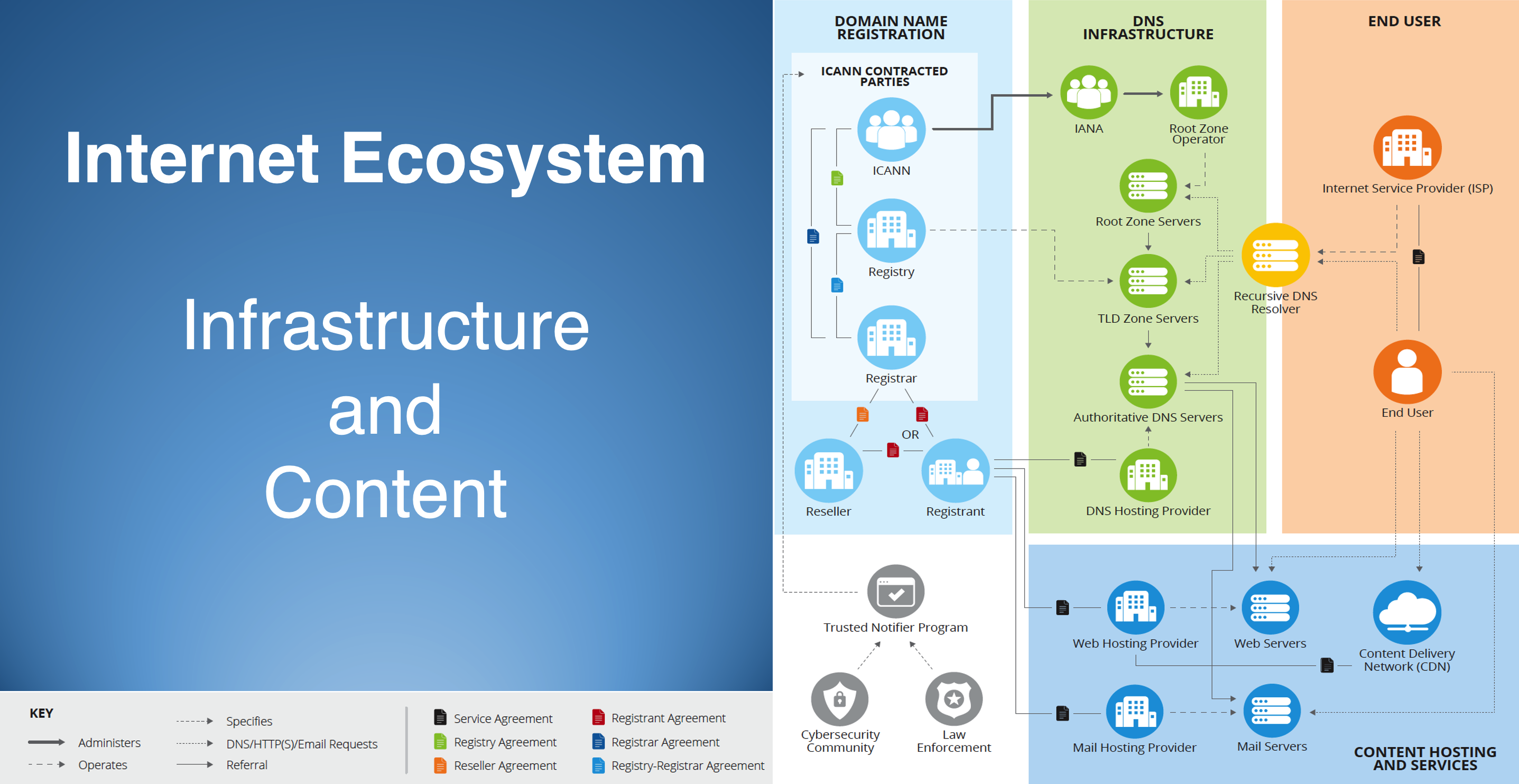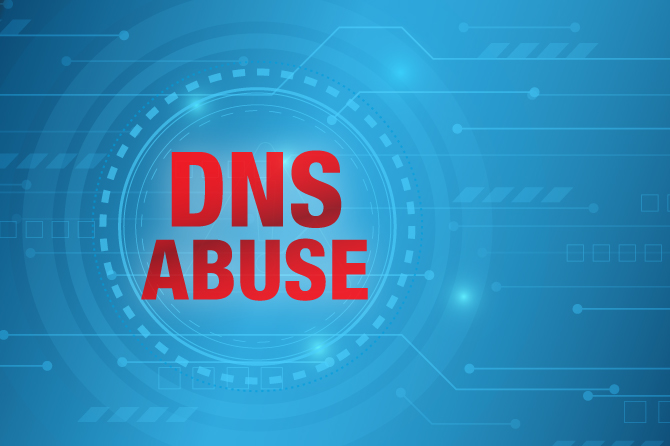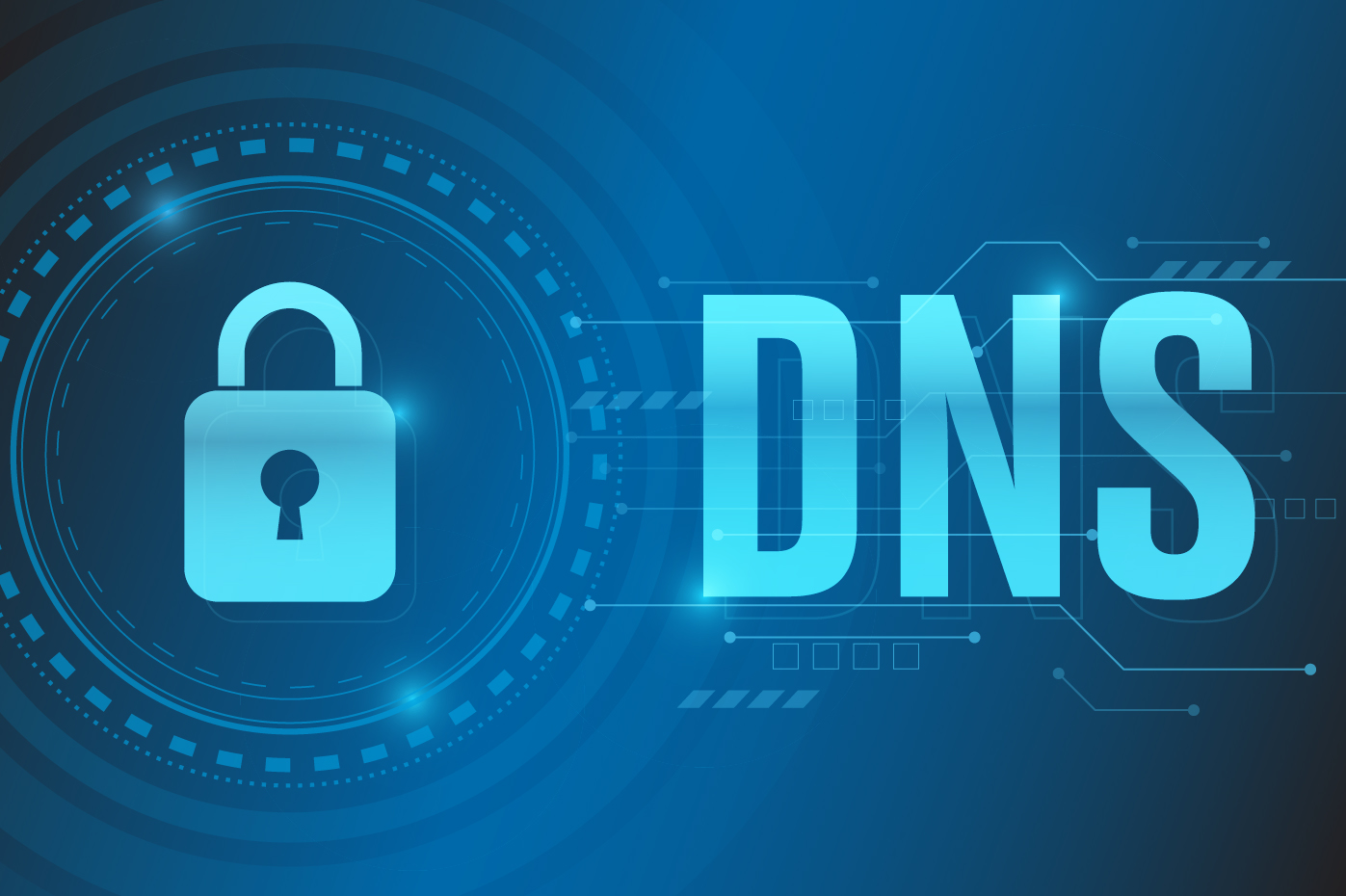For over a decade, the Internet Corporation for Assigned Names and Numbers (ICANN) and its multi-stakeholder community have engaged in an extended dialogue on the topic of DNS abuse, and the need to define, measure and mitigate DNS-related security threats. With increasing global reliance on the internet and DNS for communication, connectivity and commerce, the members of this community have important parts to play in identifying, reporting and mitigating illegal or harmful behavior, within their respective roles and capabilities.
As we consider the path forward on necessary and appropriate steps to improve mitigation of DNS abuse, it’s helpful to reflect briefly on the origins of this issue within ICANN, and to recognize the various and relevant community inputs to our ongoing work.
As a starting point, it’s important to understand ICANN’s central role in preserving the security, stability, resiliency and global interoperability of the internet’s unique identifier system, and also the limitations established within ICANN’s bylaws. ICANN’s primary mission is to ensure the stable and secure operation of the internet’s unique identifier systems, but as expressly stated in its bylaws, ICANN “shall not regulate (i.e., impose rules and restrictions on) services that use the internet’s unique identifiers or the content that such services carry or provide, outside the express scope of Section 1.1(a).” As such, ICANN’s role is important, but limited, when considering the full range of possible definitions of “DNS Abuse,” and developing a comprehensive understanding of security threat categories and the roles and responsibilities of various players in the internet infrastructure ecosystem is required.
In support of this important work, ICANN’s generic top-level domain (gTLD) contracted parties (registries and registrars) continue to engage with ICANN, and with other stakeholders and community interest groups, to address key factors related to effective and appropriate DNS security threat mitigation, including:
- Determining the roles and responsibilities of the various service providers across the internet ecosystem;
- Delineating categories of threats: content, infrastructure, illegal vs. harmful, etc.;
- Understanding the precise operational and technical capabilities of various types of providers across the internet ecosystem;
- Relationships, if any, that respective service providers have with individuals or entities responsible for creating and/or removing the illegal or abusive activity;
- Role of third-party “trusted notifiers,” including government actors, that may play a role in identifying and reporting illegal and abusive behavior to the appropriate service provider;
- Processes to ensure infrastructure providers can trust third-party notifiers to reliably identify and provide evidence of illegal or harmful content;
- Promoting administrative and operational scalability in trusted notifier engagements;
- Determining the necessary safeguards around liability, due process, and transparency to ensure domain name registrants have recourse when the DNS is used as a tool to police DNS security threats, particularly when related to content.
- Supporting ICANN’s important and appropriate role in coordination and facilitation, particularly as a centralized source of data, tools, and resources to help and hold accountable those parties responsible for managing and maintaining the internet’s unique identifiers.

Definitions of Online Abuse
To better understand the various roles, responsibilities and processes, it’s important to first define illegal and abusive online activity. While perspectives may vary across our wide range of interest groups, the emerging consensus on definitions and terminology is that these activities can be categorized as DNS Security Threats, Infrastructure Abuse, Illegal Content, or Abusive Content, with ICANN’s remit generally limited to the first two categories.
- DNS Security Threats: defined as being “composed of five broad categories of harmful activity [where] they intersect with the DNS: malware, botnets, phishing, pharming, and spam when [spam] serves as a delivery mechanism for those other forms of DNS Abuse.”
- Infrastructure Abuse: a broader set of security threats that can impact the DNS itself – including denial-of-service / distributed denial-of-service (DoS / DDoS) attacks, DNS cache poisoning, protocol-level attacks, and exploitation of implementation vulnerabilities.
- Illegal Content: content that is unlawful and hosted on websites that are accessed via domain names in the global DNS. Examples might include the illegal sale of controlled substances or the distribution of child sexual abuse material (CSAM), and proven intellectual property infringement.
- Abusive Content: is content hosted on websites using the domain name infrastructure that is deemed “harmful,” either under applicable law or norms, which could include scams, fraud, misinformation, or intellectual property infringement, where illegality has yet to be established by a court of competent jurisdiction.
Behavior within each of these categories constitutes abuse, and it is incumbent on members of the community to actively work to combat and mitigate these behaviors where they have the capability, expertise and responsibility to do so. We recognize the benefit of coordination with other entities, including ICANN within its bylaw-mandated remit, across their respective areas of responsibility.
ICANN Organization’s Efforts on DNS Abuse
The ICANN Organization has been actively involved in advancing work on DNS abuse, including the 2017 initiation of the Domain Abuse Activity Reporting (DAAR) system by the Office of the Chief Technology Officer. DAAR is a system for studying and reporting on domain name registration and security threats across top-level domain (TLD) registries, with an overarching purpose to develop a robust, reliable, and reproducible methodology for analyzing security threat activity, which the ICANN community may use to make informed policy decisions. The first DAAR reports were issued in January 2018 and they are updated monthly. Also in 2017, ICANN published its “Framework for Registry Operators to Address Security Threats,” which provides helpful guidance to registries seeking to improve their own DNS security posture.
The ICANN Organization also plays an important role in enforcing gTLD contract compliance and implementing policies developed by the community via its bottom-up, multi-stakeholder processes. For example, over the last several years, it has conducted registry and registrar audits of the anti-abuse provisions in the relevant agreements.
The ICANN Organization has also been a catalyst for increased community attention and action on DNS abuse, including initiating the DNS Security Facilitation Initiative Technical Study Group, which was formed to investigate mechanisms to strengthen collaboration and communication on security and stability issues related to the DNS. Over the last two years, there have also been multiple ICANN cross-community meeting sessions dedicated to the topic, including the most recent session hosted by the ICANN Board during its Annual General Meeting in October 2021. Also, in 2021, ICANN formalized its work on DNS abuse into a dedicated program within the ICANN Organization. These enforcement and compliance responsibilities are very important to ensure that all of ICANN’s contracted parties are living up to their obligations, and that any so-called “bad actors” are identified and remediated or de-accredited and removed from serving the gTLD registry or registrar markets.
The ICANN Organization continues to develop new initiatives to help mitigate DNS security threats, including: (1) expanding DAAR to integrate some country code TLDs, and to eventually include registrar-level reporting; (2) work on COVID domain names; (3) contributions to the development of a Domain Generating Algorithms Framework and facilitating waivers to allow registries and registrars to act on imminent security threats, including botnets at scale; and (4) plans for the ICANN Board to establish a DNS abuse caucus.
ICANN Community Inputs on DNS Abuse
As early as 2009, the ICANN community began to identify the need for additional safeguards to help address DNS abuse and security threats, and those community inputs increased over time and have reached a crescendo over the last two years. In the early stages of this community dialogue, the ICANN Governmental Advisory Committee, via its Public Safety Working Group, identified the need for additional mechanisms to address “criminal activity in the registration of domain names.” In the context of renegotiation of the Registrar Accreditation Agreement between ICANN and accredited registrars, and the development of the New gTLD Base Registry Agreement, the GAC played an important and influential role in highlighting this need, providing formal advice to the ICANN Board, which resulted in new requirements for gTLD registry and registrar operators, and new contractual compliance requirements for ICANN.
Following the launch of the 2012 round of new gTLDs, and the finalization of the 2013 amendments to the RAA, several ICANN bylaw-mandated review teams engaged further on the issue of DNS Abuse. These included the Competition, Consumer Trust and Consumer Choice Review Team (CCT-RT), and the second Security, Stability and Resiliency Review Team (SSR2-RT). Both final reports identified and reinforced the need for additional tools to help measure and combat DNS abuse. Also, during this timeframe, the GAC, along with the At-Large Advisory Committee and the Security and Stability Advisory Committee, issued their own respective communiques and formal advice to the ICANN Board reiterating or reinforcing past statements, and providing support for recommendations in the various Review Team reports. Most recently, the SSAC issued SAC 115 titled “SSAC Report on an Interoperable Approach to Addressing Abuse Handling in the DNS.” These ICANN community group inputs have been instrumental in bringing additional focus and/or clarity to the topic of DNS abuse, and have encouraged ICANN and its gTLD registries and registrars to look for improved mechanisms to address the types of abuse within our respective remits.
During 2020 and 2021, ICANN’s gTLD contracted parties have been constructively engaged with other parts of the ICANN community, and with ICANN Org, to advance improved understanding on the topic of DNS security threats, and to identify new and improved mechanisms to enhance the security, stability and resiliency of the domain name registration and resolution systems. Collectively, the registries and registrars have engaged with nearly all groups represented in the ICANN community, and we have produced important documents related to DNS abuse definitions, registry actions, registrar abuse reporting, domain generating algorithms, and trusted notifiers. These all represent significant steps forward in framing the context of the roles, responsibilities and capabilities of ICANN’s gTLD contracted parties, and, consistent with our Letter of Intent commitments, Verisign has been an important contributor, along with our partners, in these Contracted Party House initiatives.
In addition, the gTLD contracted parties and ICANN Organization continue to engage constructively on a number of fronts, including upcoming work on standardized registry reporting, which will help result in better data on abuse mitigation practices that will help to inform community work, future reviews, and provide better visibility into the DNS security landscape.
Other Groups and Actors Focused on DNS Security
It is important to note that groups outside of ICANN’s immediate multi-stakeholder community have contributed significantly to the topic of DNS abuse mitigation:
Internet & Jurisdiction Policy Network
The Internet & Jurisdiction Policy Network is a multi-stakeholder organization addressing the tension between the cross-border internet and national jurisdictions. Its secretariat facilitates a global policy process engaging over 400 key entities from governments, the world’s largest internet companies, technical operators, civil society groups, academia and international organizations from over 70 countries. The I&JP has been instrumental in developing multi-stakeholder inputs on issues such as trusted notifier, and Verisign has been a long-time contributor to that work since the I&JP’s founding in 2012.
DNS Abuse Institute
The DNS Abuse Institute was formed in 2021 to develop “outcomes-based initiatives that will create recommended practices, foster collaboration and develop industry-shared solutions to combat the five areas of DNS Abuse: malware, botnets, phishing, pharming, and related spam.” The Institute was created by Public Interest Registry, the registry operator for the .org TLD.
Global Cyber Alliance
The Global Cyber Alliance is a nonprofit organization dedicated to making the internet a safer place by reducing cyber risk. The GCA builds programs, tools and partnerships to sustain a trustworthy internet to enable social and economic progress for all.
ECO “topDNS” DNS Abuse Initiative
Eco is the largest association of the internet industry in Europe. Eco is a long-standing advocate of an “Internet with Responsibility” and of self-regulatory approaches, such as the DNS Abuse Framework. The eco “topDNS” initiative will help bring together stakeholders with an interest in combating and mitigating DNS security threats, and Verisign is a supporter of this new effort.
Other Community Groups
Verisign contributes to the anti-abuse, technical and policy communities: We continuously engage with ICANN and an array of other industry partners to help ensure the continued safe and secure operation of the DNS. For example, Verisign is actively engaged in anti-abuse, technical and policy communities such as the Anti-Phishing and Messaging, Malware and Mobile Anti-Abuse Working Groups, FIRST and the Internet Engineering Task Force.
What Verisign is Doing Today
As a leader in the domain name industry and DNS ecosystem, Verisign supports and has contributed to the cross-community efforts enumerated above. In addition, Verisign also engages directly by:
- Monitoring for abuse: Protecting against abuse starts with knowing what is happening in our systems and services, in a timely manner, and being capable of detecting anomalous or abusive behavior, and then reacting to address it appropriately. Verisign works closely with a range of actors, including trusted notifiers, to help ensure our abuse mitigation actions are informed by sources with necessary subject matter expertise and procedural rigor.
- Blocking and redirecting abusive domain names: Blocking certain domain names that have been identified by Verisign and/or trusted third parties as security threats, including botnets that leverage well-understood and characterized domain generation algorithms, helps us to protect our infrastructure and neutralize or otherwise minimize potential security and stability threats more broadly by remediating abuse enabled via domain names in our TLDs. For example, earlier this year, Verisign observed a botnet family that was responsible for such a disproportionate amount of total global DNS queries, we were compelled to act to remediate the botnet. This was referenced in Verisign’s Q1 2021 Domain Name Industry Brief Volume 18, Issue 2.
- Avoiding disposable domain name registrations: While heavily discounted domain name pricing strategies may promote short-term sales, they may also attract a spectrum of registrants who might be engaged in abuse. Some security threats, including phishing and botnets, exploit the ability to register large numbers of ‘disposable’ domain names rapidly and cheaply. Accordingly, Verisign avoids marketing programs that would permit our TLDs to be characterized in this class of ‘disposable’ domains, that have been shown to attract miscreants and enable abusive behavior.
- Maintaining a cooperative and responsive partnership with law enforcement and government agencies, and engagement with courts of relevant jurisdiction: To ensure the security, stability and resiliency of the DNS and the internet at large, we have developed and maintained constructive relationships with United States and international law enforcement and government agencies to assist in addressing imminent and ongoing substantial security threats to operational applications and critical internet infrastructure, as well as illegal activity associated with domain names.
- Ensuring adherence of contractual obligations: Our contractual frameworks, including our registry policies and .com Registry-Registrar Agreements, help provide an effective legal framework that discourages abusive domain name registrations. We believe that fair and consistent enforcement of our policies helps to promote good hygiene within the registrar channel.
- Entering into a binding Letter of Intent with ICANN that commits both parties to cooperate in taking a leadership role in combating security threats. This includes working with the ICANN community to determine the appropriate process for, and development and implementation of, best practices related to combating security threats; to educate the wider ICANN community about security threats; and support activities that preserve and enhance the security, stability and resiliency of the DNS. Verisign also made a substantial financial commitment in direct support of these important efforts.
Trusted Notifiers
An important concept and approach for mitigating illegal and abusive activity online is the ability to engage with and rely upon third-party “trusted notifiers” to identify and report such incidents at the appropriate level in the DNS ecosystem. Verisign has supported and been engaged in the good work of the Internet & Jurisdiction Policy Network since its inception, and we’re encouraged by its recent progress on trusted notifier framing. As mentioned earlier, there are some key questions to be addressed as we consider the viability of engaging trusted notifiers or building trusting notifier entities, to help mitigate illegal and abusive online activity.
Verisign’s recent experience with the U.S. government (NTIA and FDA) in combating illegal online opioid sales has been very helpful in illuminating a possible approach for third-party trusted notifier engagement. As noted, we have also benefited from direct engagement with the Internet Watch Foundation and law enforcement in combating CSAM. These recent examples of third-party engagement have underscored the value of a well-formed and executed notification regime, supported by clear expectations, due diligence and due process.
Discussions around trusted notifiers and an appropriate framework for engagement are under way, and Verisign recently engaged with other registries and registrars to lead the development of such a framework for further discussion within the ICANN community. We have significant expertise and experience as an infrastructure provider within our areas of technical, legal and contractual responsibility, and we are aggressive in protecting our operations from bad actors. But in matters related to illegal or abusive content, we need and value contributions from third parties to appropriately identify such behavior when supported by necessary evidence and due diligence. Precisely how such third-party notifications can be formalized and supported at scale is an open question, but one that requires further exploration and work. Verisign is committed to continuing to contribute to these ongoing discussions as we work to mitigate illegal and abusive threats to the security, stability and resiliency of the internet.
Conclusion
Over the last several years, DNS abuse and DNS-related security threat mitigation has been a very important topic of discussion in and around the ICANN community. In cooperation with ICANN, contracted parties, and other groups within the ICANN community, the DNS ecosystem including Verisign has been constructively engaged in developing a common understanding and practical work to advance these efforts, with a goal of meaningfully reducing the level and impact of malicious activity in the DNS. In addition to its contractual compliance functions, ICANN’s contributions have been important in helping to advance this important work and it continues to have a critical coordination and facilitation function that brings the ICANN community together on this important topic. The ICANN community’s recent focus on DNS abuse has been helpful, significant progress has been made, and more work is needed to ensure continued progress in mitigating DNS security threats. As we look ahead to 2022, we are committed to collaborating constructively with ICANN and the ICANN community to deliver on these important goals.




